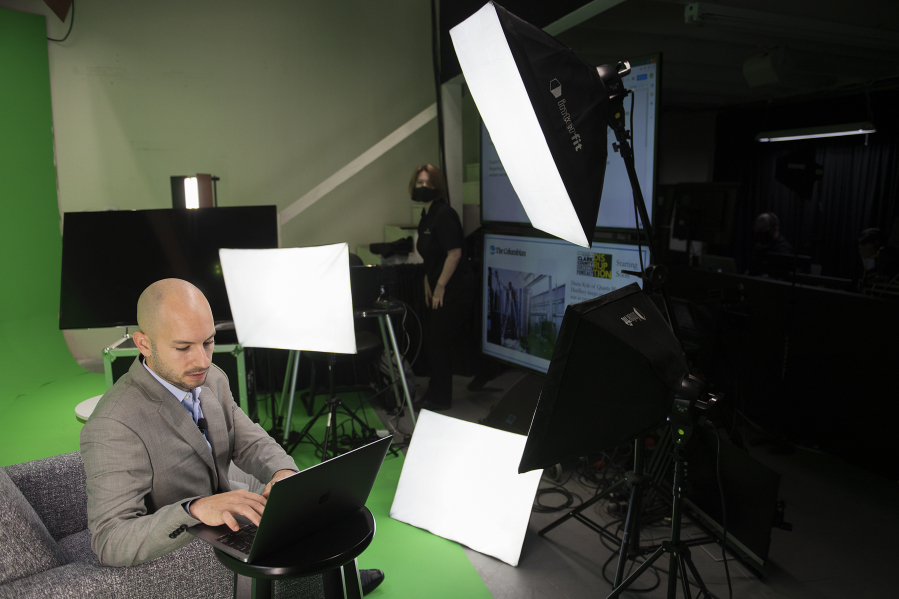The 2021 Economic Forecast had a vastly different feel to it on Tuesday compared with the last 35 years it’s been around.
It all started when The Columbian’s business reporter Julia Anderson scraped together some sources for a beginning-of-the-year article about what was to come in the local economy. She gathered them during a breakfast at The Crossing restaurant for an interview and note-taking, which turned into a story.
About 20 years ago, it shifted into an in-person event, and it’s been growing and evolving every year.
So on Tuesday, at the Wager Audio studio, lined with a green screen and a dozen different monitors, the event made another evolution — an all-digital and free event.
The layout was similar to past events as three experts discussed their industries through the theme of this year: disruption, with the ubiquitous pandemic affecting everything. A recording is available at columbian.com/economic-forecast.
Pauline Fong, program director for the MJ Murdock Charitable Trust, sat in her office at the nonprofit’s Waterfront Vancouver building as she spoke about the nonprofit sector’s drop in charitable donations, expected to drop 10 to 40 percent in 2021, she said. However, she praised some community members who are building metaphorical windmills instead of walls in the typhoon that is the pandemic.
“In my work here at the Murdock Trust, we work with hundreds of nonprofits who are facing these typhoons, and the needs for our services have skyrocketed,” she said. “So, for example, some of the nonprofits serving the houseless and the low income, the demand for their help has doubled or tripled.”
Fong’s is the first 10-minute presentation, starting at the video’s 0:15:30 mark.
Chris Green, assistant director for the Washington State Office of Economic Development and Competitiveness, joined the forecast from his office in Tacoma.
Green talked about how the state is harnessing data through its Economic Recovery Dashboard to make decisions on how best to distribute money among the counties in Washington.
One part of that is seeing how small business is negatively affected much more than large corporations by the pandemic.
“I think we will look back on this as the small business recession,” he said.
Another part of that is tracking demographic groups and seeing the discrepancies.
“One of the things is we look at recovery, we think about data and wanting this data to be public,” he said. “We want to not just look at the core economic statistics but try to think about some things around equity and how individuals are experiencing the economy. We do notice right now that there are some disparities emerging in terms of folks that are having a harder time getting back to work.”
Green’s presentation starts at the video’s 0:23:04 mark.
And finally, Scott Bailey, a regional economist with the Washington State Employment Security Department, streamed from his Portland home. His presentation begins at the video’s 0:39:20 mark.
Bailey said that economic recovery depends on four factors.
The first factor is, most obviously, COVID-19. That includes vaccine distribution and how the virus mutates. Bailey said he’s optimistic about 90 percent of the population getting vaccinated and reaching herd immunity.
The second factor is how people behave and accept a vaccine.
“If enough people continue to ignore basic public health guidelines, if too many people refuse to get vaccinated, economic recovery will be very slow,” he said. “If you want to support reopening the economy, wear a mask and get the vaccine.”
The third factor is how the federal government will address COVID-19, which includes economic assistance to businesses, individuals and local government programs.




